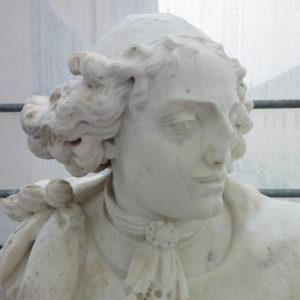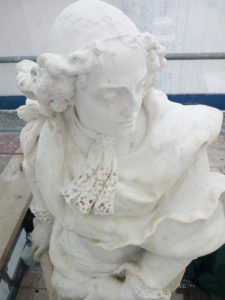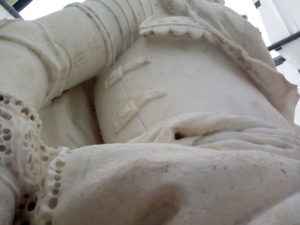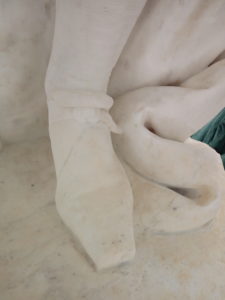The restoration project sponsored by Cesped under the Art Bonus Project of the 11 marble statues of the Provveditori generals, governors of the fortress town of Palmanova from its construction in 1593 until the fall of the Serenissima Republic of Venice.
It is an honor for our Company to participate in the protection of a city so rich in history and artistic works such as Palmanova, unique in its kind also for its particular “star” shape.
Promoted by the Ministry of Cultural Heritage and the Mayor Francesco Martines through the Art Bonus project, the restoration work is being carried out by Arecon, the same company that carried out the project just under twenty years ago, including Luisa Fogar, Daniela Cisilino and Caterina Olivieri. The restorers explain: “First of all, the statues are subjected to a biocide treatment, followed by mechanical cleaning to eliminate the biodeteriogenic agents that take on a material such as Carrara marble, which is rather porous between the stones. Then some grouting will be repaired and finally on the statues is placed a protective water-repellent, but at the same time let breathe the statue”.
The restoration work takes up to one week, ten days of operation. The restorers will continue from the entrance of Contrada Contarini, counterclockwise, along the hexagon of the square. There are scheduled to be periods of suspension at certain events, but work will continue throughout the summer.
A bit of history:
Palmanova, a fortress town, was founded on 7 October 1593 as a damper to the Ottoman invasions, not only of the Republic but of the entire Christianity. Palmanova remained under the rule of the Serenissima Republic of Venice for more than two hundred years (1593-1797), until General Bonaparte conquered it. After the Treaty of Campoformido, the fortress was built within the orbit of the Austrian Empire (1798-1805), and was later incorporated into the Kingdom of Italy (1806-1814). After the fall of Napoleon Palmanova, he returned to the heterogeneous Habsburg Empire until 1866, with the only parentheses of the 1848 uprising, when the fortress was besieged by Austrian troops for a long time. With the plebiscite of 1866 in Palmanova, the definitive union with the Kingdom of Italy was sanctioned. During the First World War it was home to hospitals, warehouses and training camp troops, with the route of Caporetto the city suffered serious devastation.
In 1960, the President of the Republic decreed Palmanova as “National Monument”.
Since Sunday, July 9th, last July, Palmanova is also a UNESCO World Heritage Site, a very important milestone for our wonderful starred city.
Preview some details of the first results of the restoration work:





